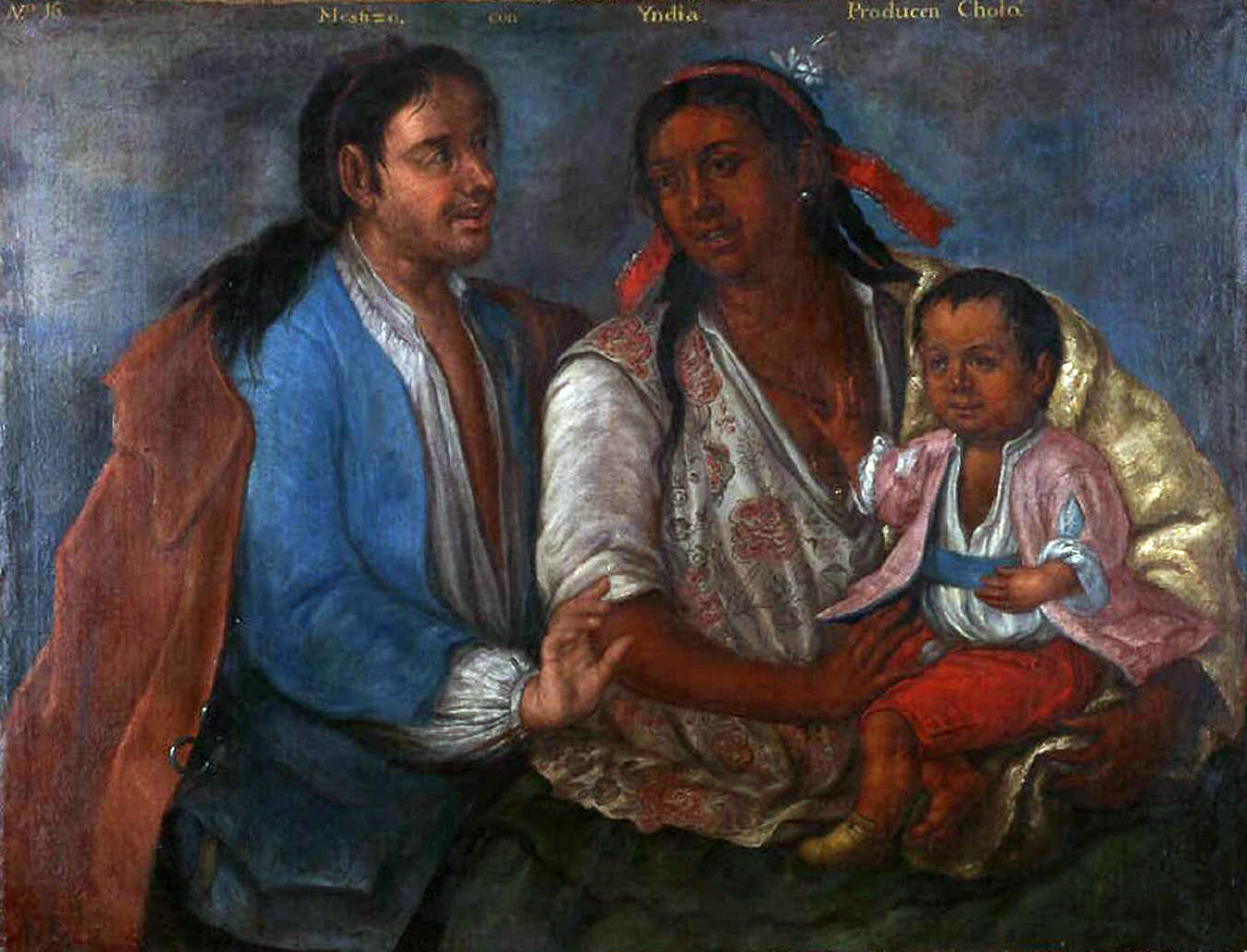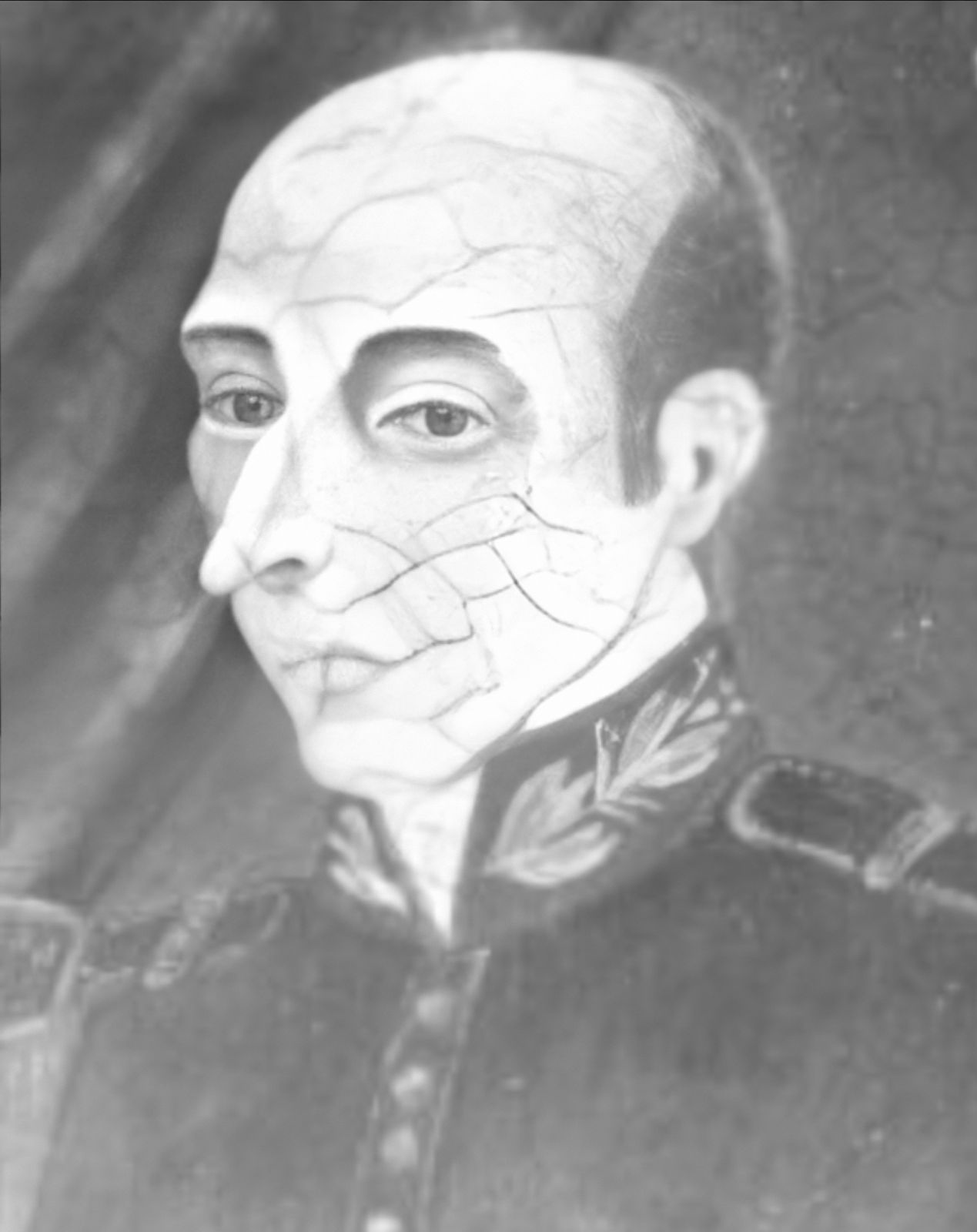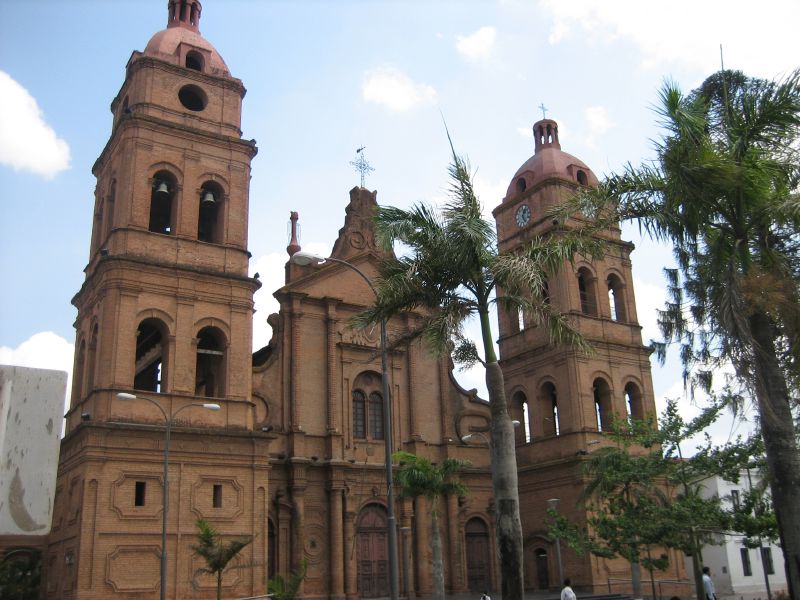|
Bolivia
Bolivia, officially the Plurinational State of Bolivia, is a landlocked country located in central South America. The country features diverse geography, including vast Amazonian plains, tropical lowlands, mountains, the Gran Chaco Province, warm valleys, high-altitude Andean plateaus, and snow-capped peaks, encompassing a wide range of climates and biomes across its regions and cities. It includes part of the Pantanal, the largest tropical wetland in the world, along its eastern border. It is bordered by Brazil to the Bolivia-Brazil border, north and east, Paraguay to the southeast, Argentina to the Argentina-Bolivia border, south, Chile to the Bolivia–Chile border, southwest, and Peru to west. The seat of government is La Paz, which contains the executive, legislative, and electoral branches of government, while the constitutional capital is Sucre, the seat of the judiciary. The largest city and principal industrial center is Santa Cruz de la Sierra, located on the Geograph ... [...More Info...] [...Related Items...] OR: [Wikipedia] [Google] [Baidu] |
Languages Of Bolivia
The languages of Bolivia include Spanish; several dozen indigenous languages, most prominently Aymara, Quechua, Chiquitano, and Guaraní; Bolivian Sign Language (closely related to American Sign Language); and languages of immigrants such as Plautdietsch. Indigenous languages and Spanish are official languages of the state according to the 2009 Constitution. The constitution says that all indigenous languages are official, listing 36 specific languages, of which some are extinct. Spanish and Quechua are spoken primarily in the Andes region, Aymara is mainly spoken in the Altiplano around Lake Titicaca, Chiquitano is spoken in the central part of Santa Cruz, and Guaraní is spoken in the southeast on the border with Paraguay. List of official languages The following languages are listed as official languages in the Constitution of Bolivia. * Castilian (Spanish) * Aymara * Araona * Baure * Bésiro (Chiquitano) * Canichana * Cavineño * Cayubaba * Chácobo * Chimán * ... [...More Info...] [...Related Items...] OR: [Wikipedia] [Google] [Baidu] |
Sucre
Sucre () is the capital of Bolivia, the capital of the Chuquisaca Department and the 6th most populated city in Bolivia. Located in the south-central part of the country, Sucre lies at an elevation of . This relatively high altitude gives the city a subtropical highland climate with cool temperatures year-round. Its pre-Columbian name was Chuquisaca; during the Spanish Empire it was called La Plata. Before the arrival of the Spanish, the city of Chuquisaca had its own autonomy with respect to the Inca Empire (the Charcas were the only people that did not pay the ransom for the Inca captive). Today, the region is of predominantly Quechua background, with some Aymara communities and influences. Today Sucre remains a city of major national importance and is an educational and government center, being the location of the Bolivian Supreme Court. Its pleasant climate and low crime rates have made the city popular amongst foreigners and Bolivians alike. Notably, Sucre contains o ... [...More Info...] [...Related Items...] OR: [Wikipedia] [Google] [Baidu] |
Cholo
''Cholo'' () is a loosely defined Spanish term that has had various meanings. Its origin is a somewhat derogatory term for people of mixed-blood heritage in the Spanish Empire in Latin America and its successor states as part of ''castas'', the informal ranking of society by heritage. ''Cholo'' no longer necessarily refers only to ethnic heritage, and is not always meant negatively. ''Cholo'' can signify anything from its original sense as a person with one Amerindian parent and one ''Mestizo'' parent, "gangster" in Mexico, an insult in some South American countries (similar to chulo in Spain), or a "person who dresses in the manner of a certain subculture" in the United States as part of the cholo subculture. Historical usage In his work ''Vocabulario en Lengua Castellana y Mexicana'' (1571), Fray Alonso de Molina reports that the word "cholo" or "xolo" derives from Nahuatl and means "paje, moço, criado o esclavo" ("page, waiter, servant o slave"). The term's ... [...More Info...] [...Related Items...] OR: [Wikipedia] [Google] [Baidu] |
Andrónico Rodríguez
Andrónico Rodríguez Ledezma (born 11 November 1988) is a Bolivian ''cocalero'' activist, political scientist, politician, and trade unionist serving as president of the Senate since 2020. A member of the Movement for Socialism, he serves as senator for Cochabamba. Rodríguez's lengthy career in the ''cocalero'' union hierarchy saw him serve as general secretary of the 21 September Workers' Center from 2015 to 2016 and as executive of the Mamoré Bulo Bulo Federation from 2016 to 2018, in addition to a multitude of other minor positions. He has served as vice president of the Coordination Committee of the Six Federations of the Tropic of Cochabamba since 2018 and held office as president of the organization from 2019 to 2020 in the absence of the body's longtime leader, Evo Morales. Early life and career Of Quechua descent, Andrónico Rodríguez was born on 11 November 1988 in Sacaba, Cochabamba, the second-youngest of four children born to Carlos Rodríguez and Sinforosa ... [...More Info...] [...Related Items...] OR: [Wikipedia] [Google] [Baidu] |
President Of The Chamber Of Senators Of Bolivia
The president of the Chamber of Senators of Bolivia is the presiding officer of the upper chamber of the Plurinational Legislative Assembly. The president is currently elected for a one-year term. Below is a list of office-holders.:https://www.researchgate.net/profile/Salvador_Romero_Ballivian/publication/324569555_Diccionario_biografico_de_parlamentarios_1979_-_2019/links/5ad5f31e458515c60f552793/Diccionario-biografico-de-parlamentarios-1979-2019.pdf Presidents 1831 to 1868 Presidents after 1878 See also * President of the Chamber of Deputies of Bolivia The president of the Chamber of Deputies is the presiding officer of the lower chamber of the National Congress of Bolivia. The president is currently elected for a one-year term. Below is a list of office-holders. See also * President of the ... References {{reflist * Senate, President of the Bolivia 1831 establishments in Bolivia ... [...More Info...] [...Related Items...] OR: [Wikipedia] [Google] [Baidu] |
David Choquehuanca
David Choquehuanca Céspedes (born 7 May 1961) is a Bolivian diplomat, peasant leader, politician, and trade unionist serving as the 39th vice president of Bolivia since 2020. A member of the Movement for Socialism, he previously served as Foreign Minister of Bolivia, minister of foreign affairs from 2006 to 2017 and as secretary general of ALBA from 2017 to 2019. An ethnic Aymara people, Aymara, Choquehuanca was born in Huarina Municipality, Cota Cota Baja, later completing secondary education in Huarina, where he became an adherent of Marxism, Marxist thought. He studied philosophy at institutes in La Paz and Havana before joining the indigenous Peasant movement, peasant labor movement, during which time he became acquainted with ''cocalero'' activist Evo Morales, with whom he went on to form the Movement for Socialism. Through the late 1990s and early 2000s, Choquehuanca served as a key advisor to Indigenous peoples in Bolivia, indigenous organizations and peasant leaders, in ... [...More Info...] [...Related Items...] OR: [Wikipedia] [Google] [Baidu] |
Vice President Of Bolivia
The vice president of Bolivia ( es, Vicepresidente de Bolivia), officially known as the vice president of the Plurinational State of Bolivia ( es, Vicepresidente del Estado Plurinacional de Bolivia), is the second highest political position in Bolivia. The vice president replaces the president in his definitive absence or others impediment and is the ''ex officio'' President of the Legislative Assembly. Thirty nine men have served as vice president of Bolivia since the office came into existence on 19 November 1826. José Ramón de Loayza was the first vice president of the Republic of Bolivia. The 38th vice president, Álvaro García Linera, was the last vice president of the Republic of Bolivia and the first vice president of the Plurinational State of Bolivia. The second and current vice president of the Plurnational State is David Choquehuanca ( since 8 November 2020). There are currently five living former vice presidents. The most recent former vice president to die was ... [...More Info...] [...Related Items...] OR: [Wikipedia] [Google] [Baidu] |
Luis Arce
Luis Alberto Arce Catacora (; born 28 September 1963), often referred to as Lucho, is a Bolivian banker, economist, and politician serving as the 67th president of Bolivia since 2020. A member of the Movement for Socialism, he previously served as minister of finance—later minister of economy and public finance—from 2006 to 2017, and in 2019. Born in La Paz, Arce graduated as an economist at the University of Warwick. His lifelong career in banking and accounting at the Central Bank of Bolivia prompted President Evo Morales to appoint him as minister of finance in 2006. For over ten years as Morales' longest-serving minister, Arce was hailed as the architect behind Bolivia's economic transformation, overseeing the nationalization of the country's hydrocarbons industry, the rapid expansion of GDP, and the reduction of poverty. His tenure was only brought to an end by a diagnosis of kidney cancer, which forced him to leave office to seek extended treatment abroad. Upon h ... [...More Info...] [...Related Items...] OR: [Wikipedia] [Google] [Baidu] |
President Of Bolivia
The president of Bolivia ( es, Presidente de Bolivia), officially known as the president of the Plurinational State of Bolivia ( es, Presidente del Estado Plurinacional de Bolivia), is head of state and head of government of Bolivia and the captain general of the Armed Forces of Bolivia. According to the Bolivian Constitution, the president is elected by popular vote to a five-year term with no limit on the number of terms a president may serve. If no candidate wins a majority (defined as either more than 50%, or alternatively at least 40% and at least 10% more than the second-place candidate), the top two candidates advance to a runoff election. Luis Arce is the 67th and incumbent president of Bolivia. He assumed office on 8 November 2020. Constitutional history Establishment On 6 August 1825, the Republic of Bolivia declared its independence and proclaimed Simón Bolívar head of state. While it is certainly true that Bolívar was the official ruler of the country s ... [...More Info...] [...Related Items...] OR: [Wikipedia] [Google] [Baidu] |
Presidential Republic
A presidential system, or single executive system, is a form of government in which a head of government, typically with the title of president, leads an executive branch that is separate from the legislative branch in systems that use separation of powers. This head of government is in most cases also the head of state. In a presidential system, the head of government is directly or indirectly elected by a group of citizens and is not responsible to the legislature, and the legislature cannot dismiss the president except in extraordinary cases. A presidential system contrasts with a parliamentary system, where the head of government comes to power by gaining the confidence of an elected legislature. Not all presidential systems use the title of ''president''. Likewise, the title is sometimes used by other systems. It originated from a time when such a person personally presided over the governing body, as with the President of the Continental Congress in the early United S ... [...More Info...] [...Related Items...] OR: [Wikipedia] [Google] [Baidu] |
Religion In Bolivia
Christianity is the largest religion in Bolivia, with Roman Catholicism being the largest denomination. While a vast majority of Bolivians are Catholic Christians, a much smaller portion of the population participates actively. In the decades following the Second Vatican Council (1962–65), the Church tried to make religion a more active force in social life. Statistics A 2018 survey for Latinobarometro returned these results: Other reviews of the population vary from these specific results. Religious freedom The constitution of Bolivia establishes the freedom of religion and a separation between church and state. The constitution further prohibits discrimination along religious lines.International Religious Freedom Report 2017 § Bolivia', US Department of State, Bureau of Democracy, Human Rights, and Labor. Religious organizations are required to register with the Ministry of Foreign Affairs, with the exception of the Catholic Church, whose registration is waived due to an ... [...More Info...] [...Related Items...] OR: [Wikipedia] [Google] [Baidu] |
Irreligion In Latin America
Irreligion in Latin America refers to various types of irreligion, including atheism, agnosticism, deism, secular humanism, secularism and non-religious. According to a global survey conducted in 2011, 16% of the population has no religion (13% of non-religious, 2% atheists convinced and 1% didn't know answer). Percentage by country Historical Trends *Sources: Based on Pew Center Research (All countries), America´s Barometer (All countries), Cid-Gallup Poll (Central America & Caribbean), National Census/Investigations (Argentina, Bolivia, Brazil, Chile, El Salvador, Mexico, Nicaragua and Uruguay), Operation World (specifically Cuba) Mexico and Central America Caribbean Northern South America Southern Cone Mexico, Central America and Caribbean Belize According to the 2010 census, about 15.5% of the population of Belize is not religious. Costa Rica Approximately, 27% of the Costa Rican population is irreligious, either non-practitioner, atheist or agnostic. Cuba Es ... [...More Info...] [...Related Items...] OR: [Wikipedia] [Google] [Baidu] |
.png)
.jpg)





